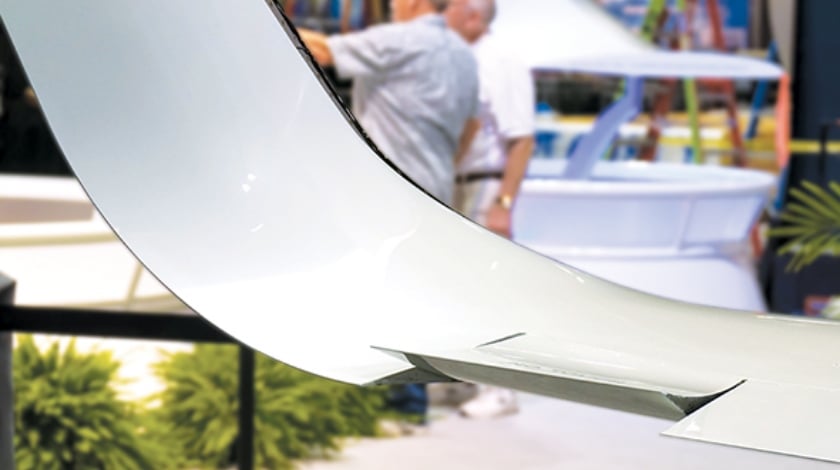Photo: aviationweek.com
Reading Time: 2 minutesWinglet specialist Aviation Partners Inc. (API) and joint-venture partner FlexSys are working with an undisclosed customer to retrofit an aircraft with the first commercial morphing wing.
The potentially game-changing aerodynamic innovation has wide-ranging implications for performance-boosting retrofits of existing business jets or clean sheet designs, and made its first appearance as an exhibit at the National Business Aviation Association show this year.
The wing-morphing “flexfoil” demonstrator illustrated how the airfoil shape could change in flight to boost performance over a wide range of angles of attack, indicated airspeeds and Mach levels. The scale model showed how wing morphing could provide integrated roll control, high lift, cruise optimization, load alleviation and even deicing functions.
The new approach to variable-camber wings builds on a FlexSys-developed compliant composite structure that eliminates the mechanical complexity of previous shape-adaptive surfaces.
The wing incorporates a one-piece, jointless mechanism that is strong and flexible, in which every section of the structure contributes equally to the shape-morphing while all components share the loads. Each section therefore sees only a small elastic strain with low stress, and the structure can undergo large deformations with high-fatigue life and low maintenance.
“We are looking for potential partners to license the technology, then certify and commercialize it,” says Joe Clark, API founder and CEO. Clark says wing morphing is the next big disruptive technology, as it enables aerodynamicists to shift the shape of the wing to achieve peak wing performance over the entire mission profile. Clark also says the gapless structure can reduce noise.
API and FlexSys agreed to team following initial flight tests of a NASA Gulfstream 3 with a 19-ft.-long morphing flap at the agency’s Armstrong Flight Research Center.
The flights tested the ability of the structure to withstand high dynamic pressures and aerodynamic loads up to 11,500 lb. per flap segment at high deflection angles, and supported FlexSys’s projected drag savings from 2% for flap retrofits to 12% for all-new design.
The test section replaced the existing flap, ground spoiler and flight spoiler/speedbrake, and was joined to the wing with a flexible transition surface.
FlexSys is currently developing adaptive compliant flap tabs for tests on a U.S. Air Force KC-135 tanker, to evaluate fuel savings and load alleviation, but is exploring wider commercial and business opportunities through the new joint venture.
API Chief Operating Officer Hank Thompson says the undisclosed first application is “pretty close to preliminary design review and is the first retrofit application. Early applications are going to be for active load alleviation and aerodynamic performance enhancement.”
The first retrofit is expected to focus on a morphing trailing edge that will provide multirole capabilities of active load alleviation, roll control and aileron droop for an improved mission-adaptive profile.
“We are actively soliciting this technology with all the world’s original equipment manufacturers, and they are very interested,” says Thompson. “Our first visit today was from Dassault. We want to license the technology and contract support operations where our engineering teams can help them realize their ideas,” he adds.

